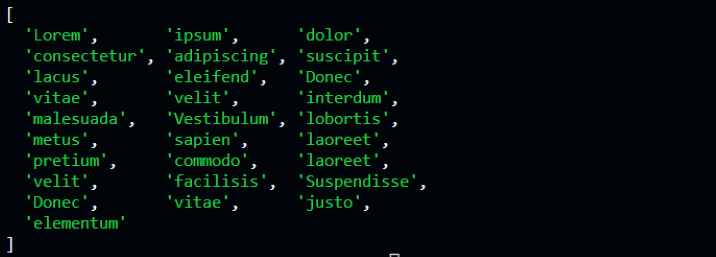
SolverJS is a comprehensive JavaScript package that provides a series of functions to help us solve common mathematical problems. We know that web applications often require complex logic to function properly, and these logic solutions can easily become lengthy and unmanageable. This is where Solver JS comes in - it includes a wide range of general and complex mathematical solutions and provides functionality not available in standard JavaScript.
In this tutorial, we will learn how to use Solver JS and its various features. The package includes features such as date conversion, keyword extraction, string case checking, URL shortening, and more.
Users can follow the steps below to use SolverJS in their projects -
Step 1 - First, we have to create a new Node.js project by running npm init in the terminal. This will create a new package.json file for our project.
npm init
Step 2 - Next, we need to install the SolverJS package by running the following command in the terminal -
npm install solverjs
Step 3 - Once we have SolverJS installed, we can start using its functions in our code. To do this, we have to import the function we want to use at the top of the JavaScript file. For example, if we wanted to use the add function, we would import it like this -
const { add } = require('solverjs');
Step 4 - Once the function is imported, we can use it in our code like any other JavaScript function. For example, to add two numbers, we can use the add function like this -
const sum = add(2, 3); console.log(sum); // Output: 5
Step 5 - Instead of using separate functions, we can also use SolverJS’s utility functions, which provide useful tools for working with data. For example, to check if a string is a valid email address, we can use the isEmail function as shown below -
const { isEmail } = require('solverjs');
const email = 'example@domain.com';
const isValidEmail = isEmail(email);
console.log(isValidEmail);
// Output: true SolverJS provides many useful functions and common logical solutions. Here are some methods provided by SolverJS -
uppercase - Capitalize the first letter of the string.
isLowerCase - Checks if all letters in a string are lowercase.
isUpperCase - Checks whether all letters in a string are uppercase.
reverseString - Reverse the order of characters in a string.
truncate - Truncate a string to the specified length, adding an ellipsis at the end if the limit is exceeded.
isPrime - Checks if a number is prime.
findFactors - Find all factors of a given number.
sum − Find the sum of the given array of numbers.
product - Finds the product of a given array of numbers.
getAge - Calculate a person's age based on date of birth.
getDaysBetweenDates - Calculates the number of days between two given dates.
getTimeFromDate - Returns the time on a given date as a string.
In this example, we use the keywordsExtractor function to extract keywords from the given text. We pass the text as argument to the function and it returns an array of keywords present in the text.
const solverjs = require('solverjs');
const text = "Lorem ipsum dolor sit amet, consectetur adipiscing elit. Duis suscipit lacus ac urna eleifend pharetra. Donec eu nibh vitae velit interdum malesuada at id sapien. Vestibulum lobortis metus sit amet sapien pulvinar, non laoreet urna vestibulum. Sed fringilla, nunc sit amet pretium ultricies, quam erat commodo est, vel laoreet velit erat eu turpis. In et urna eu ex facilisis hendrerit. Suspendisse potenti. Donec in enim vitae justo elementum bibendum.";
const keywords = solverjs.keywordExtractor(text);
console.log(keywords);

In this example, we use the isArmstrong function to determine whether a given number is an Armstrong number. The isArmstrong function accepts only one parameter, the number to check. It returns a Boolean value (true or false) depending on whether the given number is an Armstrong number.
const solverjs = require('solverjs');
// Check if the number is Armstrong number or not
console.log(solverjs.isArmstrong(153) );
console.log(solverjs.isArmstrong(9474) );
console.log(solverjs.isArmstrong(123) );
It will produce the following output -
The output of the first two console.log statements is true because 153 and 9474 are Armstrong numbers. The output of the third console.log statement is false because 123 is not an Armstrong number.
true false false
In this example, we use the dateToDay function. This function takes as input a string representing a date and returns the corresponding day of the week. In this example, the function is called with the string "01/01/2000", which represents January 1, 2000.
const solverjs = require('solverjs');
console.log('The day is : ' + solverjs.dateToDay('01/01/2000'));
It will produce the following output -
The output is the day of the week, in this case it is Saturday.
The dat is : Saturday
In this tutorial, we learned about Solver JS. We learned how to use npm to install and use Solver JS in our projects, and explored some examples of how to use its features, including the amstrong number checker, keyword extraction, and date conversion.
Overall, Solver JS provides a convenient way to simplify complex code and increase developer productivity. By using the features provided by Solver JS, we can reduce development time and focus on building high-quality applications.
The above is the detailed content of How to use SolverJS?. For more information, please follow other related articles on the PHP Chinese website!




